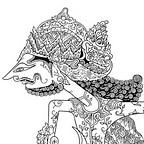St. Mary & St. Mark Coptic Orthodox Church
A Photo-Essay on Egyptian Christianity in An Enduring Edifice
St. Mary & St. Mark is housed in a historic, landmarked edifice with a layered history involving multiple, denominationally varied congregations. Designed by Samuel A. Warner and built during 1886–7, the edifice originally belonged to the German-speaking Presbyterian Church of the Redeemer before later becoming the Bethlehem Lutheran Church. In 1918, it became the Roman Catholic Church of Our Lady of Peace, which closed its doors in 2015. Since March 2017, it has been leased to the Coptic Orthodox Church of St. Mary & St. Mark in the Diocese of New York and New England.
As the edifice has not been renovated since the Coptic arrival, its interior still features the ornamentations of its Catholic period, yielding fairly unique, amalgamated aesthetics for its Coptic-American Congregation. Its exterior is Victorian Gothic in architectural style, featuring a steep, dual-gabled central facade, a pointed arch portal, and lancet windows. It is located in the Treadwell Farm Historic District, which is known for its mid/late-19th Century low-rise townhouses, as well having been home to notable historical figures like Eleanor Roosevelt and Walter Lippmann.
In absolute numbers, the Coptic Orthodox Church of Alexandria is the largest church in both Egypt and the Middle East, primordially linked to the former as the word Copt is derived from Hekaptah, the ancient Egyptian word for Egypt. Tradition holds that the Church was founded by St. Mark in 42 A.D. and today it is part of the Oriental Orthodox Communion. Oriental Orthodoxy theologically separated from the rest of Christendom before the Council of Chalcedon in 451 A.D., affirming a Miaphysite theology on Christ having a united divine-human nature, in contrast to the Chalcedonian Dyophysite theology on Christ having two separate divine and human natures.
The territorial and numerical growth of Islam since the 7th Century eventually made Coptic Christians a minority within historical Egypt by the 12th Century, with their treatment under premodern Muslim dominion ranging from relative tolerance to open persecution. In the 19th Century, the formation of a modern national identity, with favorable policies under Muhammad Ali, improved the status of Coptic Christians. Since the formation of Republican Egypt in 1953, Coptic Christians have been marginalized once again due to discriminatory policies and exclusivist discourses, further threatened in the last few decades by the rise of Islamist movements both militant and civil-political.
St. Mary & St. Mark has its particular origins in a Bible study group that began in 1999 among undergrads, post-grads, and unmarried young professionals. There were well-established Coptic congregations within the New York Metro area contemporarily, but this study group developed in parallel because of generational shifts on matters like language and personal philosophies. As 20 years have passed, the development of the study group-cum-Congregation has come full circle, as the original, unmarried professionals have long settled down and now have adult children halfway through their undergraduate educations. The Congregation now has around 80 families and is culturally diverse nationally and internationally.
The Liturgical services at St. Mary & St. Mark remain traditionally unchanged and consistent with those found in other Coptic Orthodox churches. The social orientation of the Congregation remains rooted in the keeping of the commandments of Jesus Christ to “love the Lord your God with all your heart, with all your soul, and with all your mind” and to “love your neighbor as yourself,” (Matthew 22:37–39) challenging the Congregation to serve God and the community. The parish is subject to the Coptic Orthodox Diocese of New York and New England, a relatively new Diocese created just in 2013 by the authority of H.H. Pope Tawadros II and led by its inaugural Shepherd H.G. Bishop David.
As community service has been an essential aspect of the Congregational identity ever since the study group, St. Mary & St. Mark maintains its own monthly sandwich drive to feed the homeless. It has further helped in The Bowery Mission, painted an elementary school, facilitated disaster relief supplies for victims of hurricanes, and partnered with the Ronald McDonald House. Furthermore, the Congregation has maintained a warm and friendly relationship with former parishioners of Our Lady of Peace.
Just like its edifice, St. Mary & St. Mark is an enduring Congregation consciously reconciling the traditions of its historic, ethno-national faith with the new challenges brought by diaspora and the passage of time. As is apparent in its social origin, community engagement, and treatment of preceding parishioners, the Congregation truly lives out the greatest spirit of the Gospel. “A new commandment I give to you, that you love one another; as I have loved you, that you also love one another. By this all will know that you are My disciples, if you have love for one another.” (John 13:34–35)
These photos were taken on three nonconsecutive days exclusively utilizing a wide angle lens. With the exception of the cover photo, the facade was intentionally photographed on a cloudy day to avoid shadows cast by the adjacent buildings and trees. Acknowledgment and heartfelt gratitude go to (Father) Abouna Gregory Saroufeem, who facilitated the photography of the Sanctuary during a day when it would be empty and graciously blessed the production of this photo-essay from its inception through to reviewing its draft.
